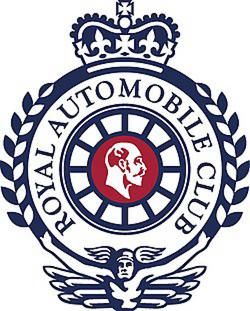Motoring milestones honoured on 2024 London to Brighton
)
London was still shrouded in pre-dawn darkness as more than 350 pioneering veteran cars, their intrepid drivers, plucky passengers plus crowds of early-rising well-wishers gathered in Hyde Park this morning (Sunday, 3 November). They were all eagerly awaiting daybreak to signal the start of the annual 2024 RM Sotheby’s London to Brighton Veteran Car Run – the world’s longest-running and most significant motoring event
It is now 128 years since the original Emancipation Run, which was held in 1896 to celebrate the recently passed Locomotives on Highways Act. This raised the speed limit for ‘light locomotives’ from 4 to 14 mph, and abolished the need for a man to walk ahead waving a red flag.
Evoking that new-found freedom, today’s much-loved homage always commences with the symbolic tearing-up of the red flag – a pre-dawn ritual which this year also marked the 120thanniversary of the Ladies’ Automobile Club.
Celebrating that milestone, the red flag was ripped by Joy Tacon and Queenie Louwman, both members of the Veteran Car Run Steering Group which supported many of the 50 or so female drivers on this year’s special celebration.
As daylight arrived on an unseasonably warm morning – and as a curtain-raiser – a pack of 25 pre-1905 motor- and pedal cycles left the start line also headed for Brighton. The brave-hearted ‘penny-farthing’ riders attracted much admiration as they embarked for Brighton’s Madeira Drive on the south coast.
Another notable entrant among the pedallers was Louise Kennedy, dressed in period bloomers, paying tribute to remarkable 19th century English cyclist Tessie Reynolds.
In 1893, Tessie set a record for cycling the 120 miles from Brighton to Hyde Park in London and back in just eight hours and 30 minutes. As she wearing practical pantaloons rather a more seemly long dress, her efforts were frowned-upon; however, in later years, her record-breaking ride has come to be regarded as a milestone for women’s rights in sport.
Once pedal power had departed, at precisely 7:00am sunrise, the first batch of the pre-1905 horseless carriages was flagged away by Duncan Wiltshire, Chairman of the Royal Automobile Club which has lovingly curated the Run ever since 1930. He was joined by Councilor Robert Rigby, the Lord Mayor of Westminster.
The most venerable of the Victorian ‘light locomotive’ vehicles led the cavalcade as they phutted and hissed their way through Wellington Arch. Then it was down Constitution Hill, past Buckingham Palace, Admiralty Arch and Whitehall, into Parliament Square and over Westminster Bridge – under the gaze of Big Ben. Here, the dry, 60-mile route split into two in order to avoid traffic congestion in south London.
Half of the plucky participants followed the traditional A23 route via Kennington, Brixton and Streatham Common; the other half journeyed across Lambeth Bridge and then through Vauxhall, Clapham Common and Tooting. The two routes then merged on the A236 just north of Croydon, with the entire magical cavalcade reunited as it headed towards the challenges of the South Downs, and eventually the Madeira Drive seafront.
As ever, vehicles then followed in age order, with the earliest starting first, giving them the most time to reach Brighton. Leading the way this year was a single-cylinder 1894 Benz entered by Hermann Layher with a Velo body and propulsion from a single-cylinder, 1.5hp engine.
The early starters included the ever-popular Salvesen Steam Car, basically a steam locomotive running on the road, complete with stoker shovelling eCoal made from a combination of olives, coffee and molasses into the boiler’s fiery furnace. It was accompanied by several primitive motorised tricycles, complete with many riders and passengers sporting period costumes.
Another of the first away was the legendary c1904 Fiat 130HP. One of three team ‘Corsa’ race cars, the Italian icon was making its first ever appearance in the UK following a meticulous three-year restoration at the Museo Nazionale dell’Automobile in Turin. With a monstrous 16.4-litre engine, the mighty, chain-driven early Grand Prix winner is the most powerful beast to have participated in the event and was honouring Fiat’s 125th birthday in 2024.
Thereafter followed a staggering variety of antique machinery, dating back to the era of pioneer vehicles. Some were fitted with steering wheels, others with naval-inspired tillers and helms; some were powered by petrol engines, others propelled by steam (hence the hissing!) and even electric batteries.
The diversity of their powertrains illustrated the embryonic industry’s innovative spirit, as different sources of propulsion vied to dominate the next century of the car’s development. A similar dilemma now faces the global car industry more than a century later. Emphasising the changes that motoring is currently going through, a number of the veteran cars taking part were running on sustainable e-fuels provided by SUSTAIN.
The unique 2024 Veteran Car Run recalled a bygone age, when motoring technology was in its infancy, and well before many cars had protective roofs or windscreens, let alone mod-cons such as on-board heaters, radios and sat-nav.
Blessed with such eccentric charm and incredible history, the evergreen Run always attracts huge wayside crowds along its entire route, and this year was no exception.
It also attracts participants from around the world, and this year’s entry included cars from Austria, Australia, Belgium, Czech Republic, France, Germany, Holland, Hong Kong, Ireland, Italy, Netherlands, Portugal, Spain, Sweden and Switzerland; some 19 came from the United States alone.
In total, more than 100 different marques were represented, ranging from Adler, Albion and Argyll to Waverley, Winton and Wolseley. A few, like Cadillac, Ford, Renault, Vauxhall and Mercedes-Benz, are still in business today, but most are long-defunct. One of the latter, De Dion Bouton, nonetheless boasted the biggest posse, with more than 50 entrants.
Maximising the dry weather, most of the starters completed the hallowed journey to Brighton well before the 4.30pm deadline, and so claimed a coveted finishers’ medal. Of the 369 starters, 325 made it to Madeira Drive in good time.
The first car to reach the Sussex seafront was the 1899 Panhard et Levassor of Shane Houilhan, the former factory team racing car completing the journey in just over three hours.
Having flagged away the early starters, Duncan Wiltshire was one of the many to savour the annual event – and a welcome hot toddy courtesy of Aberfeldy single malt whisky – after his untroubled journey aboard a 1901 Mors owned by the Royal Automobile Club.
“What a fantastic RM Sotheby’s London to Brighton Veteran Car Run it has been today,” enthused a delighted Wiltshire. “The turn-out from spectators was mighty impressive, with huge crowds lining the route all the way. You also have to marvel at the organisation. This is an incredibly complicated event which is seamlessly overseen by more than 300 wonderful volunteer marshals. It is these people who ensure the smooth and safe progress of all these extraordinary vehicles.
“This has been a fabulous way to celebrate 120 years of the Ladies’ Automobile Club, `as well as 125 years of Fiat,” continued Wiltshire. “It was terrific to see the ladies tearing up the ceremonial red flag at the start, and then to see so many of them driving on the Run itself.
“Neither will anyone forget the amazing sight and sound of the Fiat 130HP, as it thundered its way to the Brighton seafront.”
The RM Sotheby’s Veteran Car Run provided a fitting climax to the Royal Automobile Club’s busy London Motor Week, during which the Club presented a large array of functions and events. The penultimate one was the new free-to-view St James’s Motoring Spectacle staged on Pall Mall, making the perfect curtain-raiser to today’s grand finale.



)
)
)
)
)
)
)
)
)
)
)
)
)
)
)
)




.resize-500x189.png)








